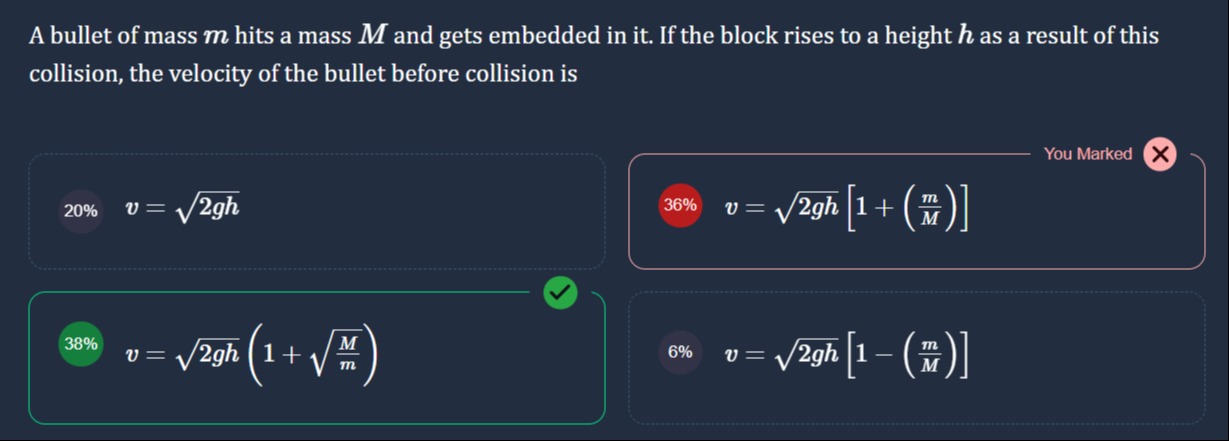Question
Question: A bullet of mass $m$ hits a mass $M$ and gets embedded in it. If the block rises to a height $h$ as ...
A bullet of mass m hits a mass M and gets embedded in it. If the block rises to a height h as a result of this collision, the velocity of the bullet before collision is

v=2gh
v=2gh(1+mM)
v=2gh[1+(Mm)]
v=2gh[1−(Mm)]
v=2gh(1+mM)
Solution
Here is the solution to the problem:
-
Consider the collision between the bullet (mass m, initial velocity v) and the block (mass M, initial velocity 0) as a perfectly inelastic collision. Apply the principle of conservation of linear momentum during the collision. Let V be the velocity of the combined bullet-block system immediately after the collision. Initial momentum = Final momentum mv+M(0)=(m+M)V mv=(m+M)V V=m+Mmv
-
After the collision, the combined mass (m+M) moves upwards and reaches a maximum height h. Apply the principle of conservation of mechanical energy from the point immediately after the collision to the point of maximum height. At the maximum height, the velocity is momentarily zero. Initial kinetic energy (after collision) + Initial potential energy = Final kinetic energy + Final potential energy 21(m+M)V2+0=0+(m+M)gh 21V2=gh V2=2gh V=2gh (since V must be positive)
-
Substitute the expression for V from step 2 into the equation from step 1: m+Mmv=2gh
-
Solve for the initial velocity of the bullet, v: v=mm+M2gh v=(mm+mM)2gh v=(1+mM)2gh
Therefore, the velocity of the bullet before collision is v=2gh(1+mM).
